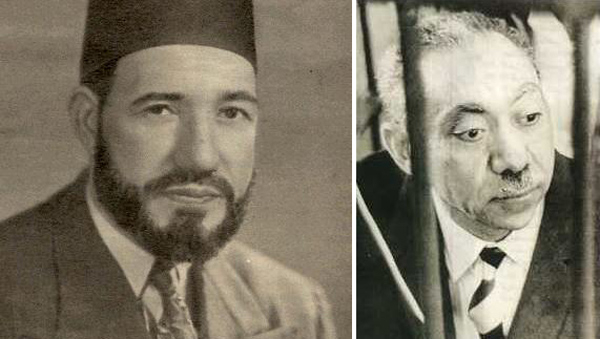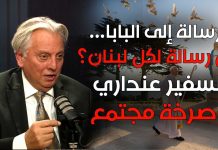Designating the Muslim Brotherhood as a Terrorist Entity
تصنيف جماعة الإخوان المسلمين ككيان إرهابي
Tom Quiggin/Gatestone Institute/July 19/2018
It can be said that Hamas has more than mere “ties” to the Muslim Brotherhood. In fact, its own documents point out that the Muslim Brotherhood has been intrinsically tied to Hamas and the entire Palestinian situation since as early as 1948.
Rather than “helping our enemies attract more recruits,” targeting the Muslim Brotherhood would weaken those organizations.
The greater point about the Muslim Brotherhood is that in its quest for domination, it is either violent or not yet violent. For this reason it should be designated as a terrorist entity.
The Congressional Subcommittee on National Security held a hearing on July 11 in Washington, DC “[t]o examine the threat of Muslim Brotherhood to the United States and its interests and how to effectively counter it.”
According to the background information provided by the Subcommittee,
“The Muslim Brotherhood is a radical Islamist organization that has generated a network of affiliates in over 70 countries. The Brotherhood has been designated as a terrorist organization by multiple countries including Eygpt, Saudi Arabia, and the United Arab Emirates. The United States has designated multiple Muslim Brotherhood affiliates as terrorist organizations, including Hamas.”
Among those testifying before the Subcommitte were: Zuhdi Jasser, president and founder of the American Islamic Forum for Democracy; Hillel Fradkin, senior fellow at the Hudson Institute; Jonathan Schanzer, senior vice president of the Foundation for Defense of Democracies; and the Honorable Daniel Benjamin, Norman E. McCulloch Jr. director from the John Sloan Dickey Center for International Understanding at Dartmouth University.
Perhaps the most startling testimony was that of Benjamin, who served as Ambassador-at-Large and Coordinator for Counterterrorism at the U.S. State Department under former Secretary of State Hillary Clinton. In his remarks to the Subcommittee, Ambassador Benjamin, whose stated position was that the Muslim Brotherhood should not be designated by the State Department as a foreign terrorist organization, advanced the belief that while Hamas has ties to the Egyptian Muslim Brotherhood, it would be a mistake at this point to say that the group is an affiliate of the organization.
This statement was inaccurate, to say the least. The original Hamas Covenant of 1988 openly declares that the organization is one of the wings of the Muslim Brotherhood in Palestine. It also states that its foundational roots go back to 1939, to the “emergence of the martyr Izz al-Din al Kissam and his brethren the fighters, who were members of Muslim Brotherhood,” and reveals that its founding history includes the “struggle of the Palestinians and Muslim Brotherhood in the 1948 war” and the “Jihad operations of the Muslim Brotherhood in 1968 and after.” As such, it can be said that Hamas has more than mere “ties” to the Muslim Brotherhood. In fact, its own documents point out that the Muslim Brotherhood has been intrinsically tied to Hamas and the entire Palestinian situation since as early as 1948.
Although the provenance of the Muslim Brotherhood was officially removed from the charter during an apparent attempt to soften it for public consumption in 2017, the revised Hamas Charter nevertheless still calls for “the liberation of all of historical Palestine”, said armed resistance was a means to achieve that goal, and did not recognize Israel’s right to exist… and backs an armed struggle.”
Ambassador Benjamin’s additional claim was equally inaccurate and worrisome. He asserted that Hamas has “a history of foreign relations – including with Iran – that no other Brotherhood group would sanction,” apparently suggesting that the Muslim Brotherhood would not tolerate Hamas being in close communication with Iran. In fact, the Muslim Brotherhood itself has had multiple interactions with Iran, specifically with the Islamic Revolutionary Guards Corps (IRGC). Nor have these interactions been simply perfunctory or diplomatic. Their purpose is and has been to establish close cooperation between Iran and the Muslim Brotherhood whenever the group is in a position of power.
In December 2012, for instance, Essam al- Haddad, the foreign affairs adviser to then-Egyptian President Mohamed Morsi — a leader of the Muslim Brotherhood — met in Cairo with the head of Iran’s Quds Force, General Qassem Soleimani. According to a Times of London report on the meeting, the Muslim Brotherhood was looking to set up an alternative security and intelligence apparatus to serve its interests, much in the way that the IRGC was established to cater to the ayatollahs. The report also quoted one Muslim Brotherhood official as saying, “The meeting was intended to send a message to America, which is putting pressure on the Egyptian Government, that we should be allowed to have other alliances with anyone we please.”
The Muslim Brotherhood’s cooperation with Iran in Egypt is neither new nor a departure from its behavior elsewhere, such as in Sudan and other countries. As a 2013 Huffington Post piece described,
“When President Al-Bashir and Hassan Al-Turabi rose to power in the 1989 coup that established an Islamist state in Sudan, one of the new regime’s first diplomatic initiatives was to forge an alliance with Iran, whose own Islamic revolution a decade earlier inspired Sudan’s Islamists (despite the Sunni-Shia division). Five months after the coup, Bashir paid a visit to Iran and the two states’ intelligence agencies signed cooperative agreements.”
Al-Bashir was head of the Sudanese Islamic Movement, which was seen as the Muslim Brotherhood’s Sudanese operation. His political affiliations, as listed by the Sudanese Tribune, were with the Muslim Brotherhood, the National Islamic Front and the National Congress Party.
In other words, the Muslim Brotherhood is quite capable of working with Iran and the IRGC, and thus, Hamas’s interactions with Iran do not reveal anything other than a well-established pattern.
In his testimony, Ambassador Benjamin also stated that the “Egyptian Brotherhood has foresworn violence since the 1970s, and there is no compelling evidence that it has reversed course on that issue.” On this point, he was partially correct. The Egyptian Muslim Brotherhood did make a seemingly serious attempt to move away from violence in the 1970s. However, to say that “there is no compelling evidence that it has reversed course” is a stretch.
In his 2012 election speech, President Morsi, the Muslim Brotherhood candidate, said: “The Koran is our constitution, the Prophet is our leader, jihad is our path and death in the name of Allah is our goal.”
More recently, in January 2015, the Muslim Brotherhood posted a communiqué on its Arabic-language website, stating: “Everyone must realize that we are on the verge of a new stage, which will require the power hidden within us, in order to use it to bring back the ideas of jihad. We must prepare ourselves, our wives, our sons, our daughters, and those who follow in our path for a lengthy, uncompromising jihad, in which we seek [to gain] the status of martyrs.”
Ambassador Benjamin told the Subcommittee, “Unwise actions to target Muslim Brotherhood groups will only deepen the animus against America, and we should not be doing anything that helps our enemies attract more recruits.”
The 2016-17 UK House of Commons Foreign Affairs Committee report on the Muslim Brotherhood appears to contradict this. According to the report, “Parts of the Muslim Brotherhood have a highly ambiguous relationship with violent extremism. Both as an ideology and as a network it has been a rite of passage for some individuals and groups who have gone on to engage in violence and terrorism.” The report also states that “membership of, association with, or influence by the Muslim Brotherhood should be considered as a possible indicator of extremism.”
In other words, the Muslim Brotherhood is a conveyor belt that moves individuals along a path to violence and terrorism, and any association with it should be considered indicative of extremism. Thus, rather than “helping our enemies attract more recruits,” targeting the Muslim Brotherhood would weaken those organizations which make up the conveyor-belt system.
The government of the United Arab Emirates concurs, with the UAE Muslim Brotherhood topping its list of officially designated terrorist organizations. Included in this list are several Muslim Brotherhood front groups, such as Islamic Relief Worldwide, CAIR USA and the Muslim American Society. Dr. Al Ketbi, chairwoman of Emirates Policy Centre, said of these groups that they “also include proxy terror actors and front organisations that give others the funding, training, and weapons to carry out terrorist acts.”
Simply put, the UAE believes that targeting the Muslim Brotherhood’s proxies and front organizations will weaken its efforts to raise funds and recruit new members.
The argument is about whether the Muslim Brotherhood is a violent organization or purely political. But, as the UK House of Commons report states: “Both as an ideology and as a network (the Muslim Brotherhood) has been at rite of passage for some individuals and groups who have gone on to engage in violence and terrorism.”
Considerable evidence exists for this. The leader of ISIS was a former member of the Muslim Brotherhood. Osama bin Laden and Ayman al Zawahiri of al Qaeda were both former Muslim Brotherhood members.
Hassan al Banna, the founder of the Muslim Brotherhood, made the role of the organization clear: “It is the nature of Islam to dominate, not to be dominated, to impose its law on all nations and to extend its power to the entire planet.” Domination, of course, implies coercion, and coercion implies the use of violence.
The greater point about the Muslim Brotherhood is that in its quest for domination, it is either violent or not yet violent. For this reason it should be designated as a terrorist entity.
Tom Quiggin is a former military intelligence officer, a former intelligence contractor for the Royal Canadian Mounted Police and a court appointed expert on jihadist terrorism in both the Federal and criminal courts of Canada. He is the author of SUBMISSION: The Danger of Political Islam to Canada – With a Warning to America, written with co-authors Tahir Gora, Saied Shoaaib, Jonathon Cotler, and Rick Gill with a foreword by Raheel Raza. He is also the primary contributor to the QUIGGIN REPORT podcast.
© 2018 Gatestone Institute. All rights reserved. The articles printed here do not necessarily reflect the views of the Editors or of Gatestone Institute. No part of the Gatestone website or any of its contents may be reproduced, copied or modified, without the prior written consent of Gatestone Institute.






















